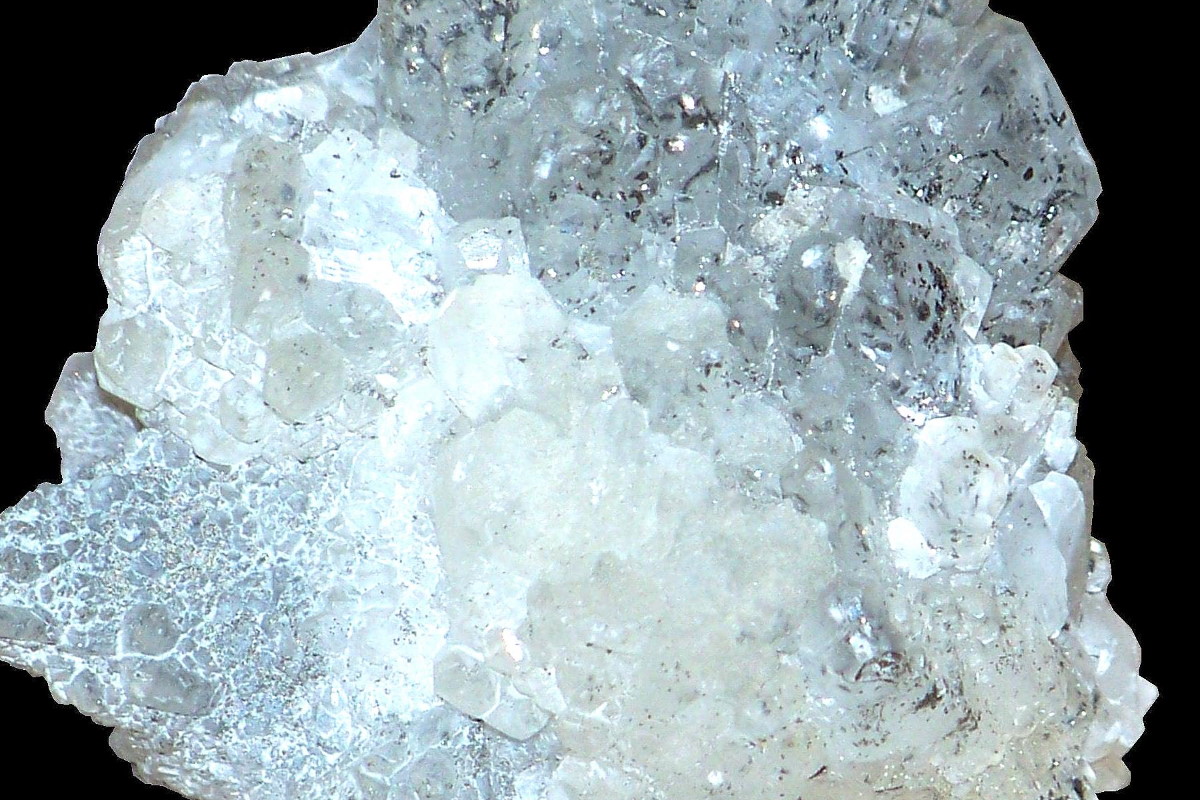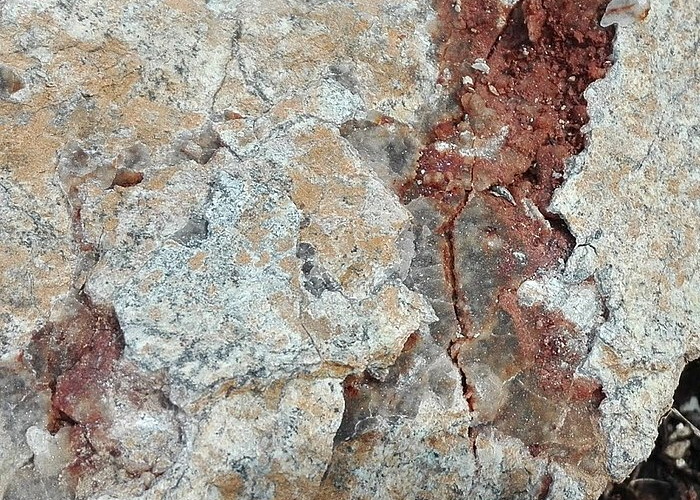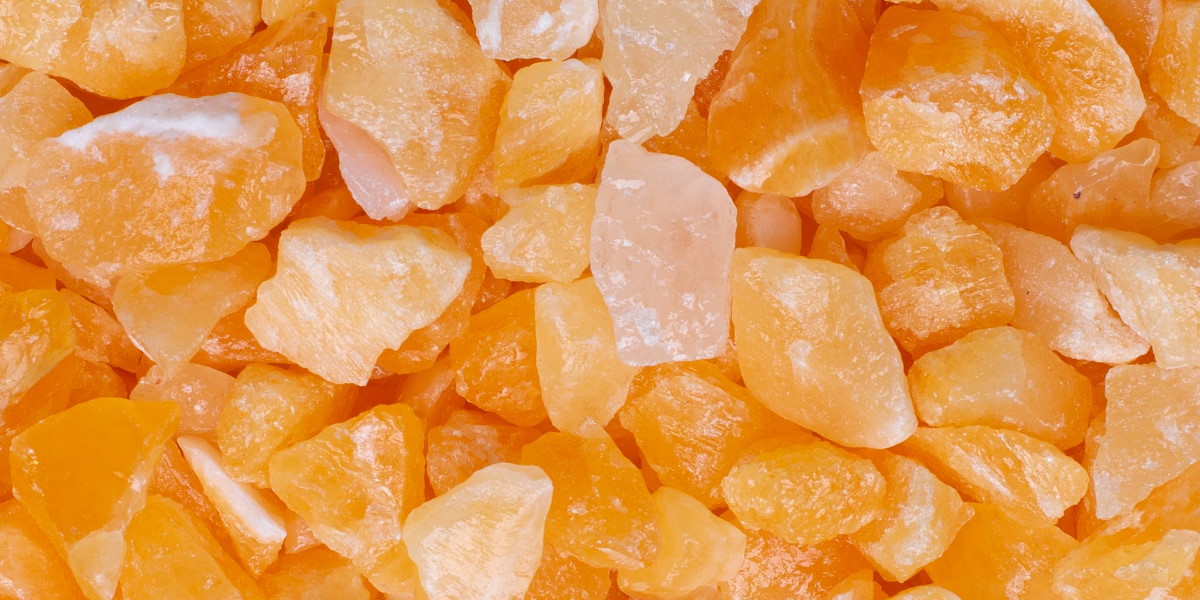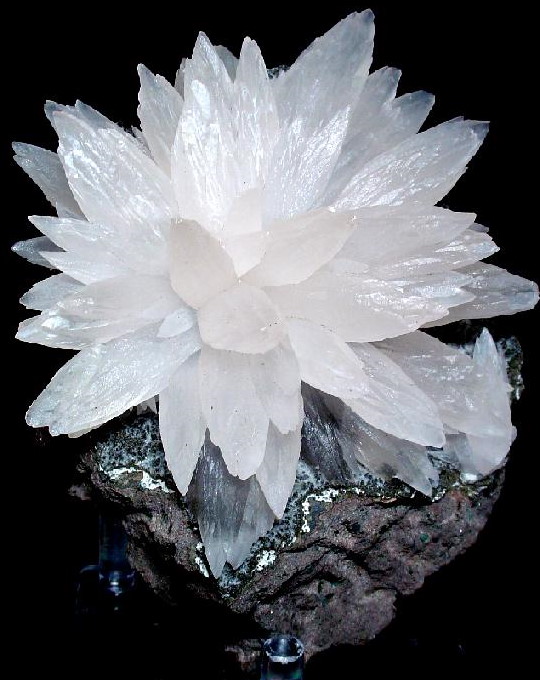Calcite
Calcite is a carbonate mineral and the most stable polymorph of calcium carbonate (CaCO3). The Mohs scale of mineral hardness, based on scratch hardness comparison, defines value 3 as „calcite”. Other polymorphs of calcium carbonate are the minerals aragonite and vaterite. Aragonite will change to calcite over timescales of days or less at temperatures exceeding 300 °C, and vaterite is even less stable.
Calcite is a sedimentary rock that forms under conditions of high pressure and temperature. It is composed of the mineral calcite (CaCO3), which is a major component of limestone and dolomite. Calcite is the most stable form of calcium carbonate under surface conditions. It has a majority of industrial uses, including the production of cement, glass, and steel.
Calcite exhibits an unusually strong birefringence, making it appear double in transmitted light. Consequently, polished calcite specimens display what is known as a „cats-eye” or „marble” effect.


Crystal, like most carbonates, will dissolve with most forms of acid. A vinegar (acetic acid) drop will slowly etch the surface of calcite, but it is unusual for calcite to be completely dissolved by even concentrated hydrochloric or sulfuric acids. When heated above 825 °C, decomposes to release carbon dioxide and calcium oxide (lime).
Calcite is a common constituent of sedimentary rocks, including limestone, dolomite, and chalk. It is also found in metamorphic rocks such as marble and serpentinite. Calcite can be either organic or inorganic. Inorganic calcite is found in the form of calcium carbonate, while organic calcite is found in the form of aragonite and vaterite.
Crystal is formed when calcium-rich materials, such as shells or bones, are broken down by wind, water, or ice. Over time, these materials are slowly deposited on the ocean floor or in lakes and rivers. The calcium carbonate then reacts with other chemicals in the water to form calcite crystals.
The most common use of calcite is in the construction industry. It is a primary ingredient in cement and concrete. Calcite is also used as an abrasive material. Glass manufacturers use calcite as a flux to remove impurities from the batch. Steelmakers use calcite as a slag former.
Calcite has a wide range of applications in agriculture, including the production of lime for soil stabilization and for crop nutrition. It is also used as an animal feed supplement. In aquaculture, calcite is used as a pH control agent.
Crystal properties


The optical properties of calcite make it a popular mineral for use in optical instruments. It is used as a refractive index agent in microscopes, binoculars, and telescopes. Calcite is also used in lasers and fiber optics.
Calcite is a popular collector’s mineral. It has a wide range of colors, including pink, blue, yellow, green, brown, and black. Calcite is often found in geodes and stalactites. It is also a popular gemstone.
Calcite is derived from the German word Kalzit, meaning „lime” or „calcium oxide”. It is a common constituent of sedimentary rocks, limestone in particular. When heated above 825 °C, calcite decomposes to release carbon dioxide and calcium oxide (lime). Calcite is a mineral that was very important in ancient times. It was used in everything from building materials to making tools and weapons. Calcite is still an important mineral today, but it is not as well known as it once was.
Crystal powers and to be able to help people connect with the divine. Stone is also thought to be helpful in promoting healing and protection.
Some of the most popular ways to use calcite in religious practices include using it as an offering or gift to the gods, using in healing rituals, and using it in protective spells and charms. Calcite is also sometimes used in divination practices. It is believed that calcite can help people see into the future and gain insight into important matters.
If you are interested in using calcite in your own religious practices, there are a few things you should keep in mind. First, it is important to make sure that you are using genuine calcite. There are many imitations on the market, so it is important to be sure that you are getting the real thing. Second, when using mineral in rituals or ceremonies, it is important to be respectful.
Calcite is a mineral that is found in many different parts of the world. It is usually white or clear, but it can also be found in other colors such as pink, orange, yellow, and brown. Crystal is made up of calcium carbonate, which is the same thing that makes up limestone.
Mineral has many different uses. In the past, it was used to make mortar, concrete, and glass. It was also used as a filler in paper and plastics. The ancient Egyptians were very fond of calcite and used it extensively in their artwork. In fact, many of the most famous Egyptian sculptures and paintings feature calcite prominently. The material was also used in jewelry and other ornamental objects.
Calcite was so popular in ancient Egypt that it even became known as „Egyptian stone.” This is because the vast majority of calcite used in ancient times came from Egypt. The country was famous for its high-quality calcite deposits and had a monopoly on the material for many centuries.
Calcite is an important mineral because it is very strong. It is also very durable, which is why it was used in so many different things in the past. Even though minreal is not as well known as it once was, it is still an important mineral that has many uses. Calcite was an important mineral in ancient Greece and was used in a variety of ways. It was used as a pigment for painting, as a flux for smelting metals, and as a construction material. Calcite is also mentioned in several ancient Greek texts, such as the Iliad and the Odyssey. In addition, the Roman naturalist Pliny the Elder wrote about the use of stone in a variety of contexts. In the Middle Ages, calcite was an important ingredient in mortar and plaster. It was also used to make blackboard chalk. Today, mineral is still an important part of many industries, including agriculture, manufacturing, and construction. It is also a popular choice for jewelry and ornamental stones.
Calcite is a popular choice for jewelry because of its wide range of colors. It can be found in shades of white, yellow, orange, red, pink, blue, green, and brown. The most common color is white, which is why it is often called „white gold.” Calcite is also very durable and has a high shine.
Calcite is a natural mineral that has many uses. It is used in construction, agriculture, and industry. Stone is also used in medicine and dentistry. Calcite is a major component of cement and concrete. It is also used in the manufacture of glass, ceramics, and paint. Crystal is found in many types of rocks, including limestone, marble, and chalk. Stone has many industrial uses. It is used as a flux in iron and steel production. Calcite is also used in the chemical industry. It is a major raw material in the manufacture of calcium carbonate, magnesium carbonate, and other chemicals.
Calcite is an important mineral in agriculture. It is used as a fertilizer and soil conditioner. Mineral is also used in the treatment of water. It is used to remove impurities from water and to make it more alkaline. Mineral is a major component of limestone, which is used in the manufacture of Portland cement.
Calcite is found in many types of rocks. It is the main mineral in limestone and marble. Calcite is also a major component of chalk. Crystal is a minor component of many other rocks, including sandstone and shale.
It is used as a soil amendment and to make lime, which is essential for crops. Calcite is also used in the manufacturing of glass, paper, and plastics. Construction is another industry that relies on calcite. It is used to make concrete, asphalt, and other building materials. Calcite is also used in the production of cement. Mineral has many uses in medicine. It is used to treat conditions such as acid reflux and osteoporosis. It is also used as a dietary supplement for people who are calcium deficient.
Calcite is a mineral that is widely distributed throughout the world. It is an important component of sedimentary rocks, such as limestone and dolomite. Calcite can also be found in metamorphic and igneous rocks. It is a major component of marble and other limestone-based products. Calcite is a major source of calcium carbonate, which is used in the production of cement, lime, and other industrial products. It is also used as a filler in paper, paints, plastics, and rubber.
Calcite is a very versatile mineral that can be used in a variety of industries. It is most commonly used in construction and manufacturing, but it can also be used in agriculture, pharmaceuticals, and even in the food industry. Calcite is most commonly used in the construction industry. It is a primary ingredient in cement and concrete, and it is also used as a filler in asphalt. In addition, calcite is often used as a base material for roads and railways.
Calcite is also widely used in the manufacturing industry. It is an essential raw material in the production of glass, steel, and plastic. In addition, calcite is used as a flux in the production of metals such as aluminum and iron. Crystal can also be used in agriculture. It is an effective soil amendment and can be used to neutralize acidic soils. In addition, calcite can be used as a livestock feed supplement. Calcite is also used in the pharmaceutical industry. It is a common ingredient in antacids and calcium supplements. In addition, calcite is used as a filler in some prescription drugs. Finally, calcite can even be used in the food industry. It is a common ingredient in toothpaste and is also used as a food additive.
Calcite is a relatively soft mineral with a Mohs hardness of 3. It is easily crushed and pulverized. Stone is a common ingredient in antacid tablets. Mineral is translucent to transparent with a vitreous luster. It has a white to colorless streak and a specific gravity of 2.71. Calcite occurs in a wide variety of shapes and colors. It is commonly found in the form of stalactites and stalagmites in caves. It can also be found in the form of twins, crystals, and snowflakes.
Orange Calcite properties


Calcite stone mining is a complex process that involves multiple stages.
The first stage is typically extracting the calcite ore from the ground. This can be done through open-pit mining or underground mining. Once the mineral ore is extracted, it needs to be crushed and screened to size. The next stage is beneficiation, where the calcite ore is separated from other minerals. Finally, the calcite ore is processed and used for various applications.
Calcite mining generally involves three steps: finding a suitable location, removing the overburden, and extracting the calcite. These steps are typically done using heavy machineries, such as bulldozers and excavators.
The first step in mineral mining is to find a suitable location. The next step is to remove the overburden or the waste rock that lies above the desired ore. Once the overburden has been removed, the calcite can be extracted. Finally, calcite is processed and used in a variety of ways.
Calcite mines are found in many parts of the world. They are often used as a source of calcium carbonate, which is an important component of cement and concrete. Calcite is also used in the manufacture of paper, plastics, and other materials.
The largest calcite mine in the world is the Southeastern United States’ Stone Mountain Mine, which is located in Georgia. Other large mines are found in China, India, Mexico, and Russia. Calcite is a very common mineral, and it can be found in sedimentary, metamorphic, and igneous rocks. It is also a common component of beach sand.
Calcite mines are found in many parts of the world including the United States, Mexico, Russia, and Turkey. The most famous calcite mine is probably the one in Tsumeb, Namibia. Other well-known stone mines include those in Italy (including Carrara), Austria, Switzerland, and England. Depending on the quality of the calcite, it can be used for a variety of purposes such as making cement, glass, and even sugar.
One of the most important properties of calcite is its optical character. It has a high refractive index and is therefore used in optics and lenses. It is also transparent to ultraviolet light, making it useful for optical fiber applications.
Stone is also used in dentistry and bone grafting, as well as for making animal feed and fertilizers. It is a major component of limestone and marble, and can also be found in metamorphic rocks such as mica schist.
Calcite is a relatively soft mineral and can be easily scratched. It has a Mohs hardness of 3 and a specific gravity of 2.71. It is transparent to translucent with a vitreous to pearly luster. Its color can be white, gray, yellow, green, blue, or brown. It often has a meter-sized crystal form and sometimes exhibits twinning.
Calcite is found in sedimentary, metamorphic, and igneous rocks. It is the primary mineral in marble and limestone. It is also a common constituent of other minerals such as dolomite, gypsum, and ankerite. It can be found in many parts of the world including Canada, the United States, Mexico, Russia, and Turkey.
The cost of crystal production depends on a number of factors, including the quality of the raw materials, the type of manufacturing process used, and the scale of production. The most important factor in determining the cost of calcite production is the quality of the raw materials. High-quality raw materials will result in a higher-quality product, and this will ultimately lead to higher production costs. The type of manufacturing process used is also an important factor in calcite production cost. A more efficient manufacturing process will result in lower production costs. Finally, the scale of production is another important factor in determining the cost of calcite production. A large-scale operation will typically have higher production costs than a small-scale operation.
Calcite deposit growth is favored by high temperature and low pH conditions. The rate of deposition increases with decreasing pH and is proportional to the square root of temperature. For example, at 70 degrees C and a pH of 5.5, the depositional rate is nearly double that at 60 degrees C and a pH 6.5. (Kosmahl and Berger, 1998).
The impact of calcite mining on the environment is felt mostly in water resources. As large amounts of calcite are removed from an area, the groundwater becomes more acidic. This can lead to a decrease in the quality of drinking water and also negatively affect aquatic life. In addition, when calcite is mined, large amounts of dust are generated. This dust can pollute the air and also contaminate water resources.
The environmental impact of calcite mining is therefore significant. It is important to be aware of these impacts and to take steps to minimize them. One way to do this is to choose mining methods that generate less pollution. Another way to reduce the impact of calcite mining is to reclaim and rehabilitate mined areas. This can help to restore the natural environment and reduce the negative impacts of mining.


The calcite crystal industry refers to the industrial sector that produces and uses crystal, a carbonate mineral.
Calcite is an important raw material for a variety of industries, including the cement, glass, paper, and steel industries. The calcite industry is a major contributor to the national economy of many countries. In 2012, the global calcite market was valued at $16.3 billion. The calcite industry is expected to grow at a compound annual growth rate (CAGR) of 6.5% from 2013 to 2018, reaching a value of $22.1 billion by 2018.
The calcite market is driven by a number of factors, including the increasing demand for calcite in the construction industry, the growing demand for paper and pulp, and the rising demand for steel. The Asia-Pacific region is the largest market for calcite, followed by North America and Europe. The Asia-Pacific region is expected to grow at the highest CAGR from 2013 to 2018, due to the increasing demand for calcite in the construction and steel industries.
The major players in the calcite market include S&B Industrial Minerals, Imerys, Omya AG, Mineral Technologies Inc., and Ashapura Minechem Ltd. These companies have a strong presence in the Asia-Pacific region.
Calcite mining and processing is an important industry in China. Calcite is a common mineral, which can be used for making cement, glass, and ceramic. The demand for calcite is increasing every year. In order to meet the needs of the market, many mineral mines have been established in China.
The calcite industry in China has developed rapidly in recent years. The output of mineral products has increased sharply, and the quality of products has also been greatly improved. At present, calcite products are exported to more than 100 countries and regions all over the world, and the market prospect is very good. In order to better develop the calcite industry, China has formulated a series of policies and measures to support the development of calcite mines and enterprises.
The Chinese government has attached great importance to the development of the calcite industry. In recent years, it has invested a lot of money in the construction of calcite mines and processing plants. At present, there are more than 200 calcite mines in China, and the annual output of calcite products is more than 10 million tons. The calcite industry has become an important pillar industry of the Chinese economy.
The development of the calcite industry has brought great economic benefits to China. It not only provides raw materials for many industries but also creates a lot of jobs for people. In addition, the export of calcite products has also brought a lot of foreign exchange earnings to China.
The calcite industry will continue to develop in the future. With the continuous improvement of technology and the expansion of market demand, the output and quality of calcite products will be further improved, and the calcite industry will play an increasingly important role in the Chinese economy.
See also: Amber stone
